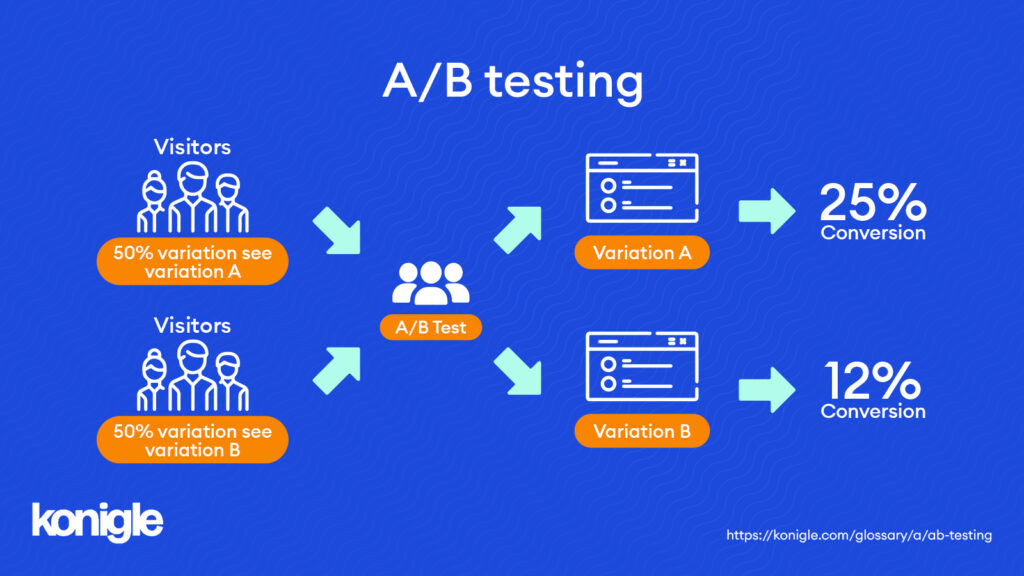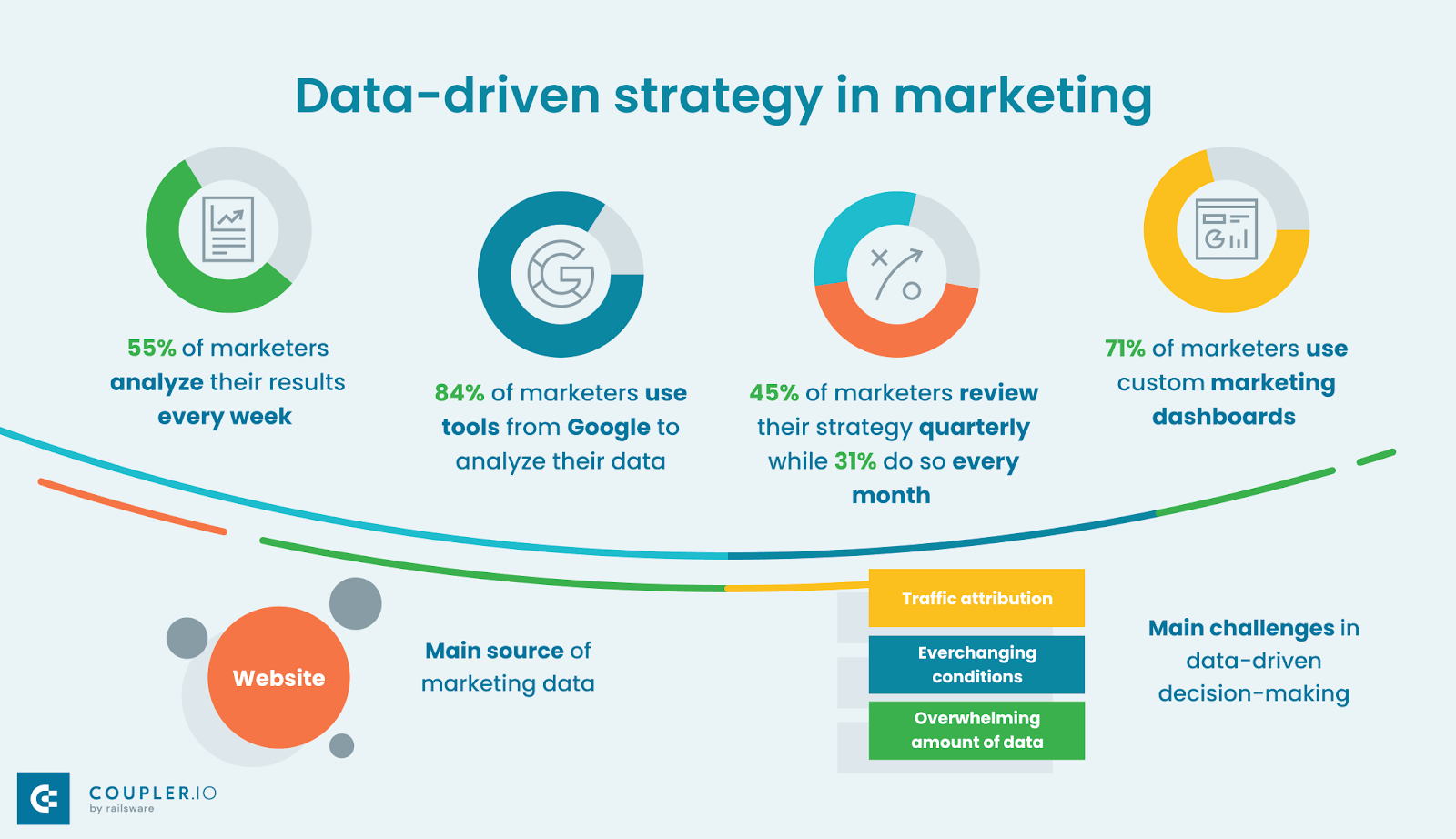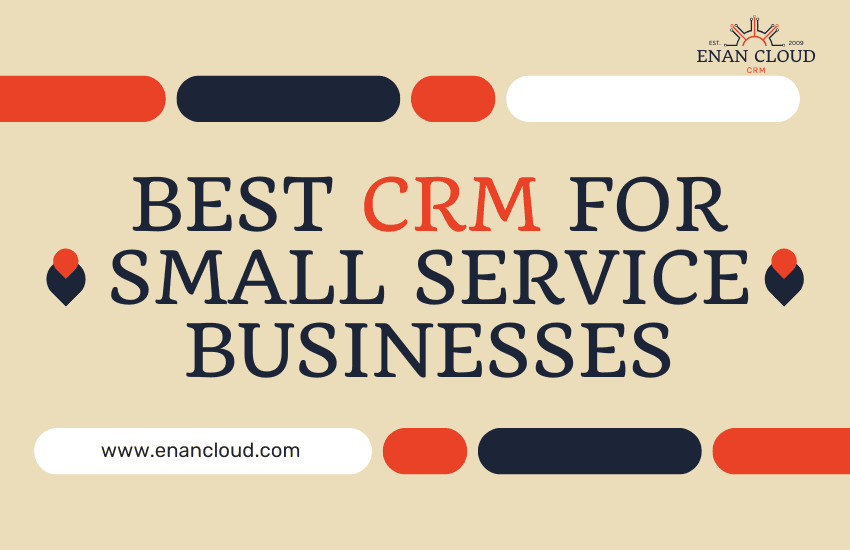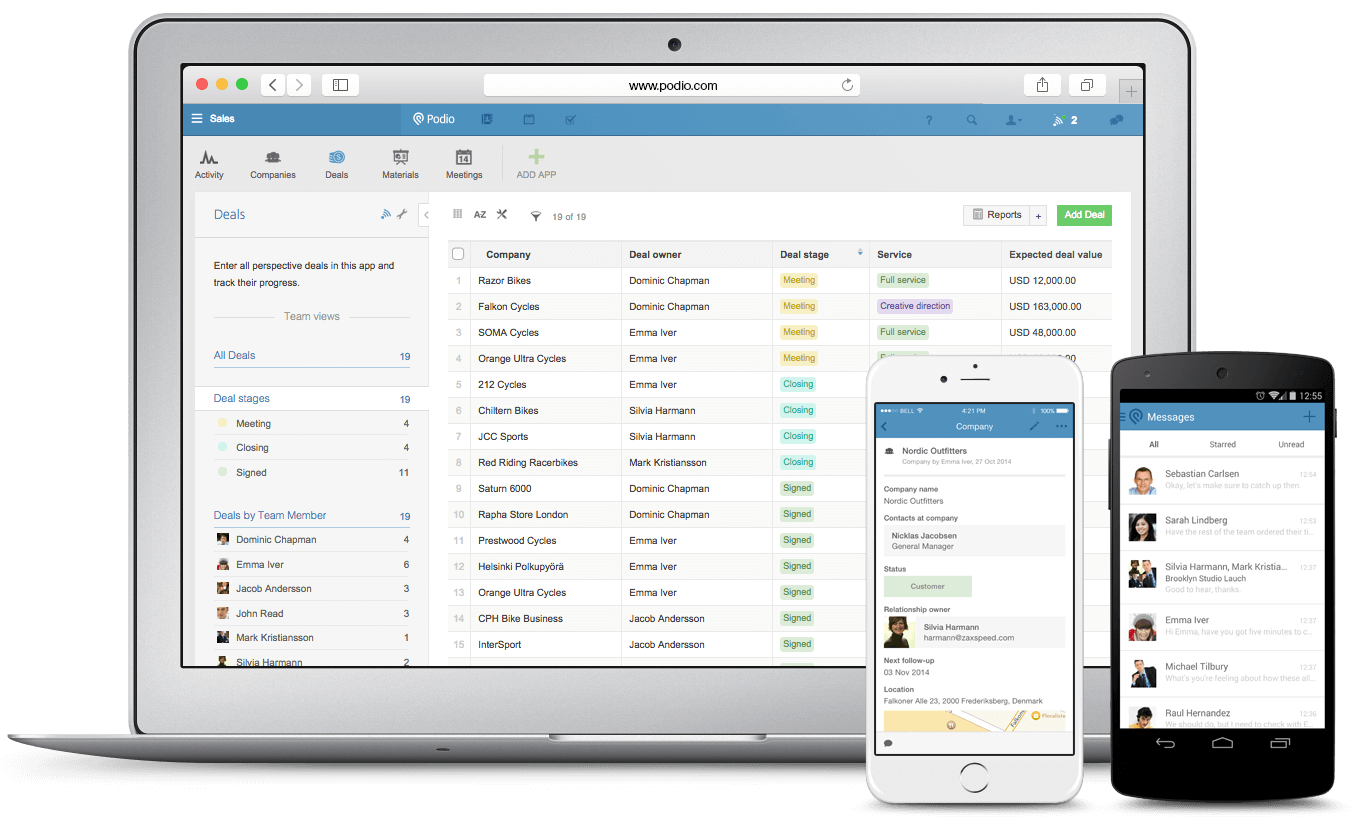
In the dynamic landscape of modern marketing, Customer Relationship Management (CRM) has evolved from a mere database into the central nervous system of a successful business. It’s no longer enough to simply collect customer data; the key lies in understanding it, leveraging it, and continually refining your strategies. This is where the power of CRM marketing intersects with the precision of A/B testing. This comprehensive guide delves deep into this powerful synergy, exploring how to conduct effective A/B tests within your CRM framework to unlock unparalleled customer engagement and maximize your Return on Investment (ROI).
Understanding the Fundamentals: CRM Marketing and A/B Testing
What is CRM Marketing?
CRM marketing is the strategic application of CRM systems to enhance customer relationships and drive business growth. It involves utilizing customer data, gathered through various touchpoints, to personalize interactions, tailor marketing campaigns, and ultimately, foster loyalty. Effective CRM marketing goes beyond broadcasting generic messages; it’s about delivering the right message, to the right customer, at the right time, through the right channel. This requires a deep understanding of customer behavior, preferences, and needs.
The Essence of A/B Testing
A/B testing, also known as split testing, is a method of comparing two versions of a marketing asset (e.g., email, landing page, ad copy) to determine which performs better. It involves showing different versions of the asset to different segments of your audience and measuring which version generates a higher conversion rate, click-through rate, or other predefined metric. A/B testing provides data-driven insights, allowing marketers to make informed decisions and optimize their campaigns for peak performance.
Why Combine CRM Marketing and A/B Testing?
The combination of CRM marketing and A/B testing is a match made in marketing heaven. CRM provides the rich customer data needed to segment your audience and personalize your tests. A/B testing, in turn, provides the data-driven insights needed to refine your CRM strategies and optimize your customer interactions. This powerful synergy allows you to:
- Personalize at Scale: Tailor marketing messages to specific customer segments based on their behavior and preferences.
- Improve Conversion Rates: Optimize every aspect of your marketing efforts, from email subject lines to website landing pages.
- Enhance Customer Experience: Deliver more relevant and engaging content, leading to increased customer satisfaction and loyalty.
- Maximize ROI: Make data-driven decisions that drive higher conversion rates, increased sales, and improved profitability.
Setting Up Your CRM for A/B Testing Success
Choosing the Right CRM Platform
The first step is selecting a CRM platform that offers robust A/B testing capabilities. Some popular options include:
- HubSpot: A comprehensive platform with built-in A/B testing features for emails, landing pages, and website content.
- Salesforce: A leading CRM with extensive customization options, including integrations with third-party A/B testing tools.
- Zoho CRM: An affordable and user-friendly platform with A/B testing capabilities for email marketing.
- ActiveCampaign: Known for its marketing automation features, ActiveCampaign offers A/B testing functionality for emails and automations.
When choosing a CRM, consider factors such as:
- Ease of Use: The platform should be user-friendly and easy to navigate.
- Integration Capabilities: Ensure the platform integrates with your existing marketing tools and platforms.
- A/B Testing Features: Look for features such as A/B testing for emails, landing pages, and website content.
- Reporting and Analytics: The platform should provide detailed reports and analytics to track the performance of your tests.
- Segmentation Capabilities: The platform should allow you to segment your audience based on various criteria.
Data Segmentation: The Foundation of Effective Testing
Data segmentation is the process of dividing your customer base into distinct groups based on shared characteristics. This allows you to personalize your A/B tests and target specific segments with tailored messages. Your CRM data is your most valuable asset for segmentation. Consider segmenting your audience based on:
- Demographics: Age, gender, location, income, etc.
- Behavior: Website activity, purchase history, email engagement, etc.
- Preferences: Products or services of interest, communication preferences, etc.
- Lifecycle Stage: Lead, prospect, customer, loyal customer, etc.
The more granular your segmentation, the more effective your A/B tests will be. This also allows you to understand that your customer base is diverse and has individual needs. Don’t treat everyone the same.
Defining Clear Objectives and KPIs
Before launching any A/B test, it’s crucial to define clear objectives and Key Performance Indicators (KPIs). What are you trying to achieve with this test? What metrics will you use to measure success? Having a clear understanding of your goals will help you design more effective tests and track your progress. Common KPIs for CRM marketing A/B tests include:
- Conversion Rate: The percentage of customers who complete a desired action (e.g., making a purchase, signing up for a newsletter).
- Click-Through Rate (CTR): The percentage of recipients who click on a link in an email or on a landing page.
- Open Rate: The percentage of recipients who open an email.
- Revenue per Customer: The average revenue generated per customer.
- Customer Lifetime Value (CLTV): The predicted revenue a customer will generate over their entire relationship with your business.
- Lead Generation: The number of new leads generated.
Set realistic goals and track your progress regularly. This provides a benchmark for future campaigns.
Designing and Executing A/B Tests in Your CRM
Identifying Areas for Testing
The possibilities for A/B testing within your CRM marketing are endless. Start by identifying areas where you believe you can improve performance. Some common areas to test include:
- Email Subject Lines: Experiment with different subject lines to increase open rates.
- Email Content: Test different email layouts, copy, and calls to action.
- Landing Pages: Optimize your landing pages for higher conversion rates.
- Website Content: Test different website headlines, copy, and calls to action.
- Personalization: Test different levels of personalization to see what resonates best with your audience.
- Segmentation: Test different segmentation strategies to identify the most effective ways to group your customers.
- Automation Workflows: Test different sequences of emails and other marketing activities.
Prioritize your testing efforts based on potential impact. Focus on areas that have the greatest potential to improve your KPIs.
Creating Test Variations
Once you’ve identified an area for testing, it’s time to create your test variations. Keep the following tips in mind:
- Test One Variable at a Time: Change only one element in each variation to isolate the impact of that specific change.
- Use a Control Group: Always include a control group to serve as a baseline for comparison.
- Keep it Simple: Don’t overcomplicate your tests. The simpler, the better.
- Write Compelling Copy: Use clear, concise, and engaging language.
- Use High-Quality Visuals: Incorporate images, videos, and other visuals to capture your audience’s attention.
Running the Test and Collecting Data
Once you’ve created your test variations, it’s time to launch your test. Make sure to allocate a sufficient sample size and run the test for a sufficient period to ensure statistically significant results. Monitor your test closely and collect data on your predefined KPIs. This is where your CRM’s reporting and analytics capabilities come into play. Many CRM platforms have built-in A/B testing functionality. You will be able to run your test within the platform, and collect data accordingly.
Analyzing Results and Drawing Conclusions
After your test has run its course, it’s time to analyze the results. Compare the performance of your test variations and identify which one performed best. Use statistical analysis to determine whether the differences in performance are statistically significant. Don’t be afraid to celebrate a win! If the results are inconclusive, don’t be discouraged. Analyze the data to understand why the test didn’t produce the desired results. This is all part of the learning process.
Some common tools for analyzing A/B test results include:
- Built-in CRM Analytics: Most CRM platforms provide built-in analytics dashboards to track your test results.
- Google Analytics: Integrate your CRM with Google Analytics for more in-depth analysis.
- Third-Party A/B Testing Tools: Tools like Optimizely or VWO can provide advanced analytics and reporting.
Implementing Changes and Iterating
Once you’ve analyzed your results, implement the changes that produced the best results. Then, don’t stop there! A/B testing is an ongoing process. Continuously test new variations, refine your strategies, and optimize your campaigns for peak performance. The best marketers are those who are always learning and iterating.
Advanced A/B Testing Strategies for CRM Marketing
Personalization Strategies
Personalization is a cornerstone of effective CRM marketing. A/B testing allows you to experiment with different personalization strategies to see what resonates best with your audience. Here are some examples:
- Personalized Subject Lines: Test subject lines that include the recipient’s name, location, or other relevant information.
- Personalized Email Content: Test different email layouts and copy that are tailored to the recipient’s interests and preferences.
- Dynamic Content: Use dynamic content to display different content blocks based on the recipient’s behavior or demographics.
- Product Recommendations: Test different product recommendation strategies to increase sales.
Behavioral Targeting
Behavioral targeting involves delivering marketing messages based on a customer’s behavior. A/B testing allows you to optimize your behavioral targeting strategies. Some examples include:
- Abandoned Cart Emails: Test different email sequences to recover abandoned carts.
- Welcome Emails: Test different welcome email sequences to onboard new customers.
- Re-engagement Campaigns: Test different campaigns to re-engage inactive customers.
- Website Retargeting: Test different retargeting ads to bring visitors back to your website.
Multi-Variate Testing
Multi-variate testing (MVT) allows you to test multiple variables simultaneously. This can be a powerful way to optimize your marketing campaigns. However, it’s important to have a large sample size to ensure statistically significant results. MVT is more complex, and should be used after you have a good understanding of your customer base and have been running A/B tests for a while.
Testing Across Multiple Channels
Don’t limit your testing to a single channel. Test different variations across multiple channels, such as email, SMS, social media, and website content. This will give you a holistic view of your marketing performance.
Common Pitfalls to Avoid
Insufficient Sample Size
One of the most common pitfalls is using an insufficient sample size. This can lead to inaccurate results and incorrect conclusions. Make sure to allocate a sufficient sample size to each test variation to ensure statistically significant results. There are many online calculators you can use to determine the appropriate sample size for your tests. It’s important to have enough data to make informed decisions.
Running Tests for Too Short a Period
Another common mistake is running tests for too short a period. Run your tests for a sufficient period to account for fluctuations in customer behavior. Try to run your tests for at least a week or two, or even longer if your sales cycle is longer. The longer you run your test, the more reliable your results will be.
Not Segmenting Your Audience
Failing to segment your audience can lead to inaccurate results. Make sure to segment your audience based on relevant characteristics to ensure that your tests are targeted and effective. Don’t treat your entire customer base the same.
Not Having a Clear Hypothesis
Before launching any A/B test, it’s crucial to have a clear hypothesis. What are you trying to achieve with this test? What do you expect to happen? Having a clear hypothesis will help you design more effective tests and track your progress. The hypothesis will help you understand why the test performed the way it did.
Ignoring the Results
This is perhaps the biggest mistake. Don’t ignore the results of your A/B tests. Implement the changes that produced the best results and continuously iterate your strategies based on your findings. If you’re not learning from your tests, then you’re wasting your time and resources.
Measuring Success and Analyzing Results
Key Metrics to Track
As mentioned earlier, the metrics you track will depend on your specific objectives. However, some key metrics to consider include:
- Conversion Rate: The percentage of customers who complete a desired action.
- Click-Through Rate (CTR): The percentage of recipients who click on a link.
- Open Rate: The percentage of recipients who open an email.
- Bounce Rate: The percentage of visitors who leave your website without interacting with it.
- Revenue per Customer: The average revenue generated per customer.
- Customer Lifetime Value (CLTV): The predicted revenue a customer will generate over their lifetime.
Use a combination of these metrics to get a comprehensive view of your marketing performance.
Using Data to Drive Decision-Making
The ultimate goal of A/B testing is to use data to drive decision-making. Don’t rely on gut feeling or intuition. Instead, let the data guide your decisions. Analyze your test results, identify what works, and implement changes accordingly. Make sure to document your findings and share them with your team. The more you learn, the better your results will be.
Continuous Improvement
A/B testing is not a one-time activity. It’s an ongoing process of continuous improvement. Continuously test new variations, refine your strategies, and optimize your campaigns for peak performance. The marketing landscape is constantly evolving, so you need to stay ahead of the curve by constantly testing and learning. This will give you a competitive advantage.
Examples of Successful CRM Marketing A/B Tests
Let’s look at some real-world examples of successful CRM marketing A/B tests:
Example 1: Email Subject Line Optimization
Objective: Increase email open rates.
Test: Test two different email subject lines:
- Variation A (Control): “Special Offer Inside!”
- Variation B: “[Your Name] – Exclusive Discount for You”
Result: Variation B, which included the recipient’s name, resulted in a 20% higher open rate.
Implementation: The company implemented Variation B as the standard subject line for future email campaigns.
Example 2: Landing Page Optimization
Objective: Increase conversion rates on a landing page.
Test: Test two different landing page designs:
- Variation A (Control): A long-form landing page with a detailed explanation of the product.
- Variation B: A short-form landing page with a concise description and a clear call to action.
Result: Variation B, the short-form landing page, resulted in a 15% higher conversion rate.
Implementation: The company replaced the long-form landing page with the short-form version.
Example 3: Email Content Personalization
Objective: Increase click-through rates on an email campaign.
Test: Test two different email content variations:
- Variation A (Control): A generic email with a standard product description.
- Variation B: A personalized email with product recommendations based on the recipient’s past purchase history.
Result: Variation B, the personalized email, resulted in a 25% higher click-through rate.
Implementation: The company integrated personalized product recommendations into all of its future email campaigns.
The Future of CRM Marketing and A/B Testing
The future of CRM marketing and A/B testing is bright. As technology continues to evolve, we can expect to see even more sophisticated A/B testing tools and strategies. Some trends to watch out for include:
- Artificial Intelligence (AI): AI-powered tools will be used to automate A/B testing and provide more advanced insights.
- Machine Learning (ML): ML algorithms will be used to predict customer behavior and personalize marketing campaigns.
- Cross-Channel Optimization: Marketers will focus on optimizing their campaigns across multiple channels, such as email, SMS, social media, and website content.
- Increased Personalization: Marketers will leverage data to deliver even more personalized experiences to their customers.
The companies that embrace these trends will be best positioned to succeed in the future. CRM marketing and A/B testing are not just about optimizing campaigns; they are about building stronger customer relationships and driving long-term business growth. It’s about understanding your customers and giving them what they need.
Conclusion: Embracing the Power of CRM Marketing A/B Testing
In conclusion, CRM marketing A/B testing is a powerful combination that can transform your marketing efforts and drive significant results. By leveraging the rich customer data available in your CRM system, you can segment your audience, personalize your tests, and optimize your campaigns for peak performance. Remember to choose the right CRM platform, define clear objectives and KPIs, design effective tests, and continuously iterate your strategies based on your findings. Embrace the power of data-driven decision-making and watch your customer engagement and ROI soar.
A/B testing is not just a technical process; it’s a mindset. It’s about embracing a culture of continuous improvement, experimentation, and learning. By consistently testing and refining your strategies, you can stay ahead of the curve and build a thriving business. So, start testing today and unlock the full potential of your CRM marketing efforts.




